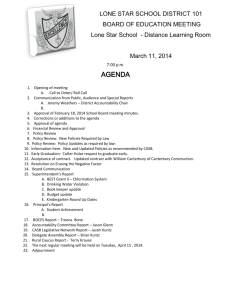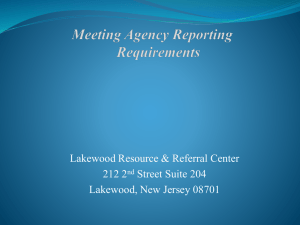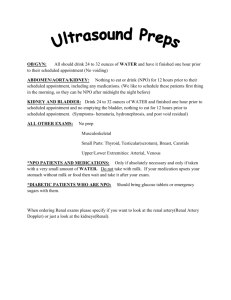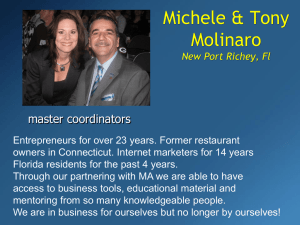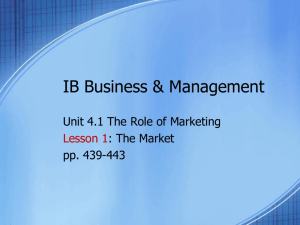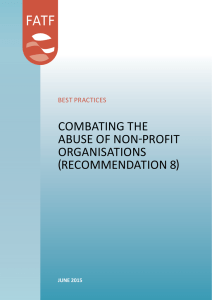PRACTICAL APPLICATION CHECKLIST: MODULE ONE
advertisement
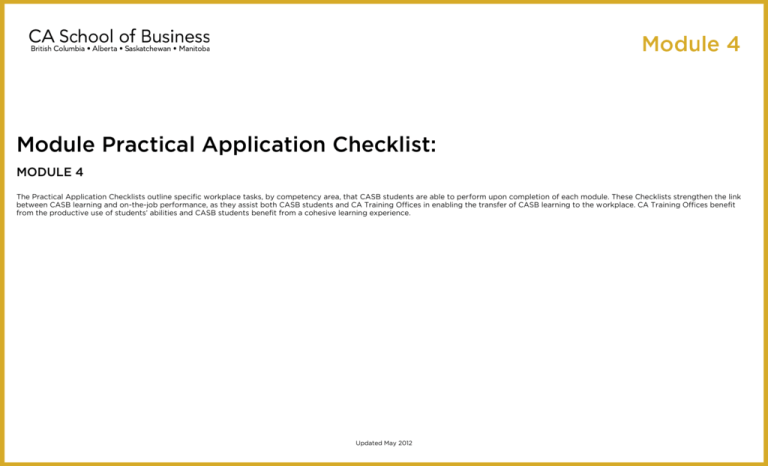
Module Practical Application Checklist: MODULE 4 The Practical Application Checklists outline specific workplace tasks, by competency area, that CASB students are able to perform upon completion of each module. These Checklists strengthen the link between CASB learning and on-the-job performance, as they assist both CASB students and CA Training Offices in enabling the transfer of CASB learning to the workplace. CA Training Offices benefit from the productive use of students’ abilities and CASB students benefit from a cohesive learning experience. Updated May 2012 Practical Application Checklist: Module 4 Module 4 areas of focus: Governance, strategic planning, expansion of business, due diligence, NPOs, IFRS Assurance Develop audit procedures for assertions relevant to: Deferred development costs Asset impairment Financial instruments Evaluate the implications of a possible fraud situation at a subsidiary branch Identify fraud risk factors Evaluate internal control at an NPO Complete due diligence review of tax returns and financial statements of a potential acquisition Develop general and specific due diligence procedures for a company to be acquired Develop audit procedures for standard costs and inventory roll forward Identify internal controls that can be relied upon for Purchases-Payables-Disbursements cycle and develop relevant tests of controls Evaluate assurance options for non-financial performance measures Management Decision Making Calculate the standard cost for a product Prepare a one-year cash flow projection Recommend improvements to IT strategy at an NPO Performance Measurement & Reporting Complete year-end financial statements, including accounting for: Taxation Calculate current corporate tax provision Analyze tax implications of non-capital losses and related tax planning strategies Deferred development costs Asset impairment Asset decommissioning costs Financing costs Warranty costs Non-monetary transactions Government grants Calculate deferred tax provision Analyze tax implications of proposed staff and shareholder benefits Identify basic filing requirements for NPOs Review contracts and balance sheet accounts and identify financial instruments and fair value adjustments Analyze tax implications of retaining insurance proceeds versus using proceeds to replace property Calculate inventory standard costing and identify compliance with IFRS standards and disclosure requirements Complete due diligence review of tax returns and financial statements of a potential acquisition Explain and account for NPO contributions using deferral method and restricted method Pervasive Finance Identify implications of a cash flow projection on securing additional financing and complying with current loan agreement covenants Evaluate financial health of an organization, including ability to meet loan payments and calculation of financial ratios Evaluate a long term supply contract Analyze an investment opportunity qualitatively and quantitatively (net present value, payback and internal rate of return) Recommend ways to improve cash flow and working capital, including: Sale of redundant assets Alternative financing Governance, Strategy & Risk Management Review a deferred tax provision Protect the public interest Evaluation of and accounting treatment for a long term sales contract, sale of good, sale of inventory and construction contract Adhere to the Rules of Professional Conduct Complete a branch performance review and evaluate risk management with respect to a possible fraud situation Self-manage Evaluate corporate governance structures Demonstrate leadership and initiative Assess social corporate responsibility Maintain and demonstrate competence and recognize limits Identify the need for strategic planning Design of performance measures by applying balanced scorecard and responsibility accounting concepts Strive to add value in an innovative manner Treat others in a professional manner Obtain information Examine and interpret information and ideas critically Identify type of engagement needed by management for due diligence work Solve problems and make decisions Prepare a five year cash flow projection Communicate effectively and efficiently Develop a plan and tests for a system conversion Manage and supervise Develop performance measures, including nonfinancial Updated May 2012 Identify fraud risk factors Evaluate governance structure and IT strategy at an NPO Review and improve management’s strategic plan Provide NPO board member with advice regarding ethical issues
